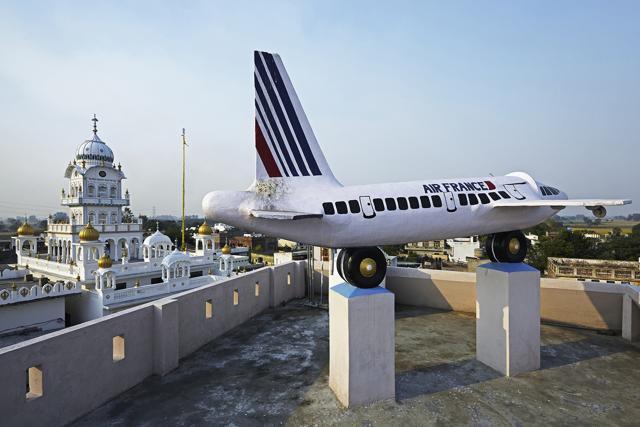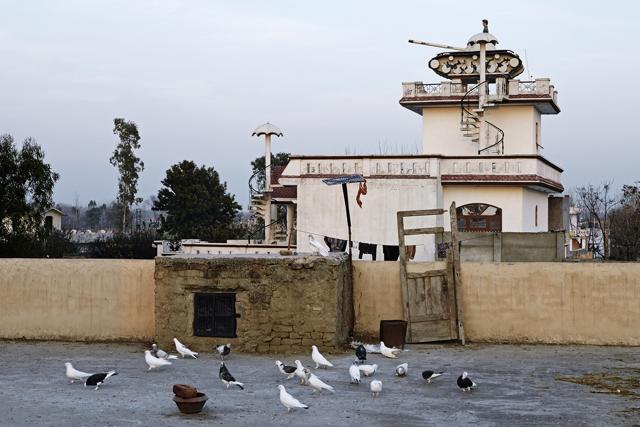How water tanks became tanks, planes: A photo journey through Punjab
Who would put toy athletes, household pets, aeroplanes atop their homes? On a road trip through rural Punjab, a photographer comes across unexpected art on the roof
As with other forms of art, a photograph is a document of secrets. Its meaning may be hidden, stated obliquely, or even seem that it has none. Until the time the photographer himself speaks about it.
In 2014-15, Rajesh Vora, a photographer who has tracked patterns of migration and human aspiration, undertook a 6,000-km road trip to document sentimental roof-top decorations through four districts of rural Punjab. The exhibition, ‘Everyday Baroque’, is the culmination of that project.
“Issues faced by migrants in an urban environment has been the focus of my visual study,” says Vora, a Mumbai photographer. “In the Nineties, the period of Miss Worlds and Miss Universes inspired me to a do a photo study on the young generation wanting to be aspiring models in the Mumbai suburbs. ‘Everyday Baroque’ is a project with the same ethos with the difference that here I tell the story of a people without their presence.”
This, as the exhibition shows, is not a drawback. The focus on houses, their design and architecture is seen as expressions of people who inhabit them, their struggles and aspirations. Vora’s photographs make us understand why weightlifters, footballers, flowers, animals, utensils, cars and airplanes can be conceived as things to put on rooftops and water tanks, let alone be seen as objects of art.

When did Vora chance upon the phenomenon? “Two years ago, while travelling in the villages of Punjab, I witnessed a unique scene. To obtain quick visas, devotees offered toy planes at a place of worship, which they called the Airplane Gurudwara,” says Vora. “More fascinating were the rumours of successful wealthy immigrants, returning to their village, and placing an airplane model on their newly built homes. Something told me that this was more than just a ‘Toy Story’.”

This trend found patronage with the first wave of Punjab’s immigrants, when NRIs began building homes in their villages back in the late 1970s. But is the present generation expressing success and ambition in different ways?
Apparently not. Earlier footballs, hawks (a religious symbol) and airplanes were common and the houses were modest. “Today, the houses are getting bigger and are adorned with just about everything which catches their fancy,” says the photographer. Hummer vehicles, motorcycles, transport trucks, bhangra dancers, kangaroos are the latest examples of water tank art dotting the rural skyline.

Sentiment has clearly played a central role here. A restaurant owner in New York wanted to celebrate India’s win in cricket. What does he do? He gets a water tank built in the shape of a trophy. A farmer in Canada put a ship atop his Punjab house in memory of his father who had initially travelled by ship to Singapore. A water tank in the shape of a Maruti 800 car with a number plate stating 1992 went up the year when the house was built by the NRI owner as he was the first man in the region with a Maruti. A fond grandson now in Italy, commissioned a tractor atop his water tank in the memory of his late grandfather, who was the owner of the first tractor in his village. So let’s not talk ‘aesthetics’ here. The things that people have in their lives have much to do with the lives they have led.
‘Everyday Baroque’ is on at the PhotoInk Gallery (Tuesday - Saturday 11am-7pm) till April 30. Ph: 2689 7722. Website:www.photoink.net





